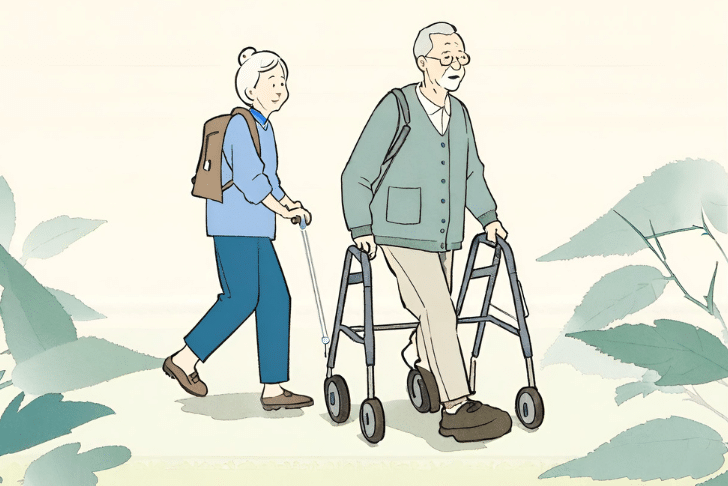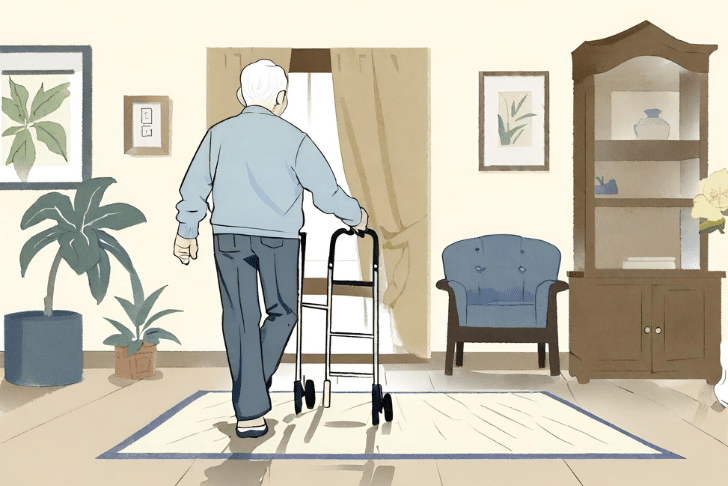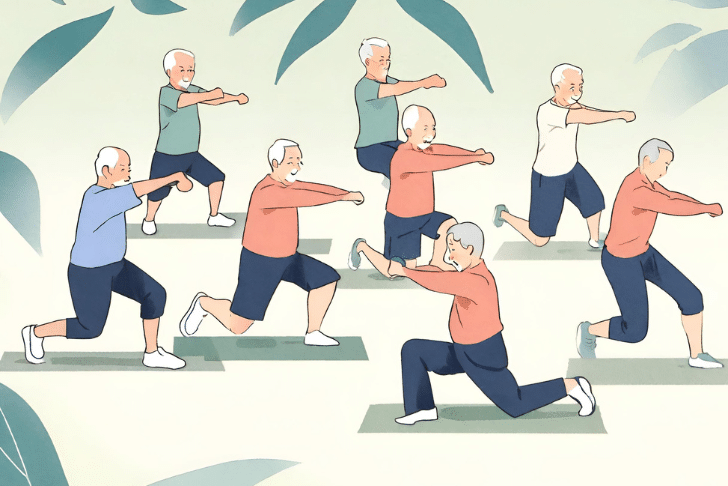In “Preventing Falls through Balance and Strength Training for Seniors”, you will discover the importance of implementing regular exercises that prioritize balance and strength.
The article details exercises suited for older adults to enhance stability and reduce the risk of harmful falls. The exercises are specifically designed to be manageable for seniors and are presented along with important safety guidelines for the optimal well-being of seniors.
This will give you insight on how to sustain your independence and mobility as you gracefully age, ensuring a safer and healthier lifestyle.
Understanding the Risk of Falls in Seniors
Falls among older adults are unfortunately a common event with growing statistical evidence to support the fact. According to the Centers for Disease Control and Prevention, every year, more than 25 percent of adults 65 years and older experience a fall, and 3 million are treated in emergency departments for fall injuries. These figures highlight the seriousness of the issue and underline the importance of prevention strategies.
The impacts and costs of falling for seniors can be significant, facing not only physical injuries but also psychological trauma, loss of independence, and health care costs. It’s important to understand that the consequences of a fall can go beyond the immediate physical damage, affecting various aspects of an elderly person’s life.
There are several factors causing increased risk of falls in seniors. These include balance and walking problems, the use of multiple medications, home hazards like dim lighting and trip risks, and conditions like positional low blood pressure. Feet and footwear issues could also play a role. Understanding and addressing these factors is crucial in reducing the risk of falls in this vulnerable population.
The Role of Balance in Fall Prevention
Balance plays a pivotal role in fall prevention as we age. It is typically affected by vision changes, vestibular problems, and altered sensations in the feet. Thus, maintaining balance becomes increasingly important for older adults to prevent falls.
Biological factors such as deteriorating muscle strength, slower reflexes, and age-related health issues can affect balance in seniors. Moreover, certain medical conditions like Parkinson’s disease or stroke could also disrupt a senior’s balance coordination.
Issues with vision and vestibular problems can significantly affect balance. These issues could alter an individual’s spatial orientation, leading to disorientation and subsequently an increased risk of falling.

Effect Of Medications on Fall Risks
Polypharmacy (the use of multiple medications) is a common trait among older adults that significantly increases their fall risks. Studies have indicated that individuals taking five or more medications face a higher risk of falls due to the combined side effects such as dizziness, drowsiness or lack of coordination.
Various types of medications, especially those for blood pressure, heart diseases, or sleep disorders, can affect balance by causing side effects like dizziness or disorientation.
The need for doctors to review medication lists regularly thus becomes crucial. Regular reviews can aid in spotting potential risk-increasing drugs and making necessary modifications to the regimen to safeguard senior’s health.
The Importance of Home Safety in Preventing Falls
Common household fall hazards such as loose rugs, inadequate lighting, and cluttered walkways can significantly increase the risk of a fall. Being aware of these hazards and rectifying them is a simple yet effective way to prevent falls.
Strategies for minimizing trip and fall risks at home include improving lighting, clearing pathways, using non-slip mats, and installing handrails and grab bars where necessary.
One must also be aware of the relationship between positional low blood pressure and falls. Orthostatic hypotension, a condition where blood pressure drops upon standing, can provoke a fall. Seniors with this condition should be cautious when moving from a sitting to a standing position.

Understanding Balance and Strength Training
Balance and strength training have a multitude of benefits for seniors including enhancing muscle strength, improving coordination, boosting confidence, and reducing the likelihood of falls.
By participating in regular balance and strength training, seniors can significantly reduce their risk of falls. This is because these exercises improve muscle coordination and strength which are vital for maintaining balance.
The effective balance and strength training programs include exercises that are tailored to the individual’s fitness level, incorporate a combination of strength, balance, flexibility, and endurance exercises, and are safe to execute.
Practical Balance and Strength Exercises for Seniors
One fundamental and practical exercise for seniors is the Sit-to-Stand exercise. It helps in building leg strength, improving body mechanics, and balance – all of which are integral in reducing falls.
Balance exercises are also essential for better body stability. They work on enhancing the body’s center of gravity, thus improving balance control and reducing the risk of falls.
It is crucial to adapt each exercise to the individual fitness and health levels of seniors for the training to be effective while ensuring their safety.

Advanced Versions of Balance and Strength Exercises
Incorporating hand weights into routines can provide an additional challenge and assist in strength build-up once the basic exercises are mastered.
To avoid fitness plateaus, progressive challenges should be introduced into the exercise regimen progressively. A gradual introduction of new, more complex exercises can help keep motivation levels high and ensure continuous improvement.
Safety cannot be compromised when attempting more advanced exercises. It’s advisable to have supervision during these workout sessions to prevent unnecessary accidents.
The Necessity of Doctor or Physical Therapist Consultation
Before starting a new exercise plan, it’s crucial to clarify safety guidelines with health professionals. They can offer important insights and recommendations suited to one’s health condition.
Additionally, with the help of physical therapists, customized exercises are designed to suit individual health conditions, strengthening the most relevant areas and promoting a safe workout.
However, should any pain or discomfort arise during exercise, it is vital to stop the exercises and consult a professional immediately.
Additional Measures for Fall Prevention
Preventing falls is a multifaceted approach involving not only exercises but also open discussions with doctors about fall risks and prevention strategies. They can provide expert guidance and help in understanding one’s individual risk factors.
The importance of regular medical checkups cannot be overstated as timely detection and management of health conditions can significantly reduce fall risks.
Making homes safer for seniors is a collective responsibility. Enlisting help in identifying and mitigating potential risks can create a safer living environment.
Safe Practices While Exercising at Home
Exercising at home can bring a sense of convenience and comfort but it also comes with its own set of risks. Ensuring someone is present while exercising can provide a level of safety and supervision in case of a sudden fall.
Creating a conducive environment for home exercises includes having ample space, removing potential hazards, and ensuring a firm, non-slippery surface to exercise on.
In case of a fall during a home exercise session, it’s crucial to have an emergency plan. Safety measures such as having a phone within reach, knowing who to call, and understanding how to correctly handle a fall can be life-saving.
